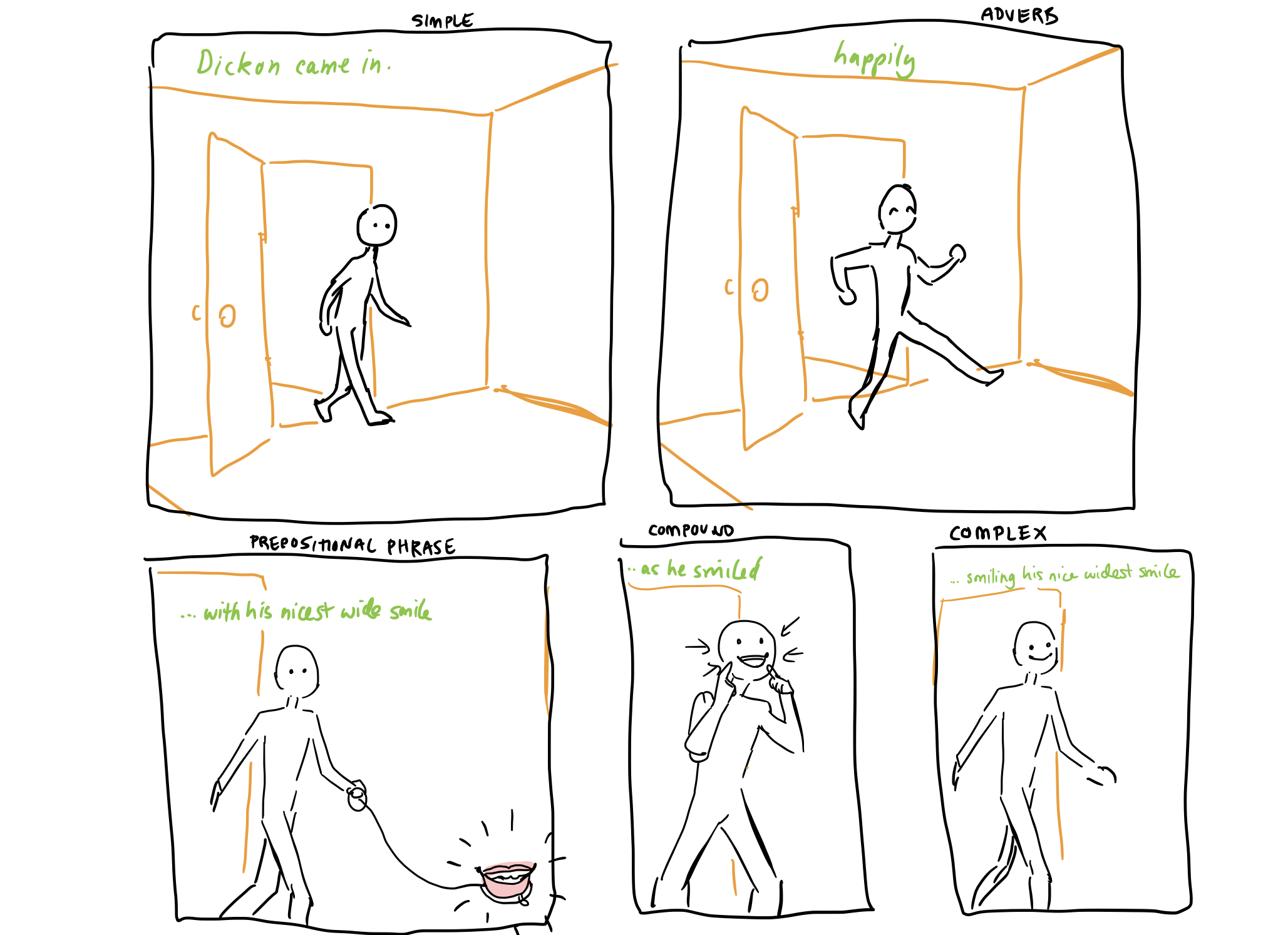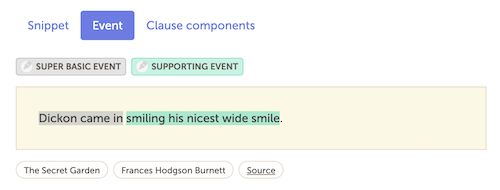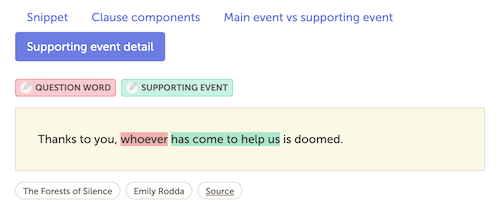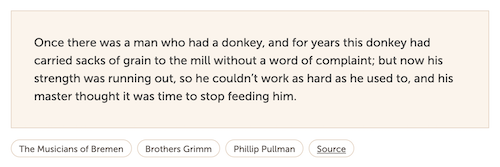We can't believe we're saying this, but we finally finished the Complex Sentences lesson.
Anyone who makes it through the word groups and sentence structure lessons will have a tactical, functional, powerful toolkit for analysing and editing writing. (Some of the terminology might be non-standard, but you'll have all the conceptual pieces.)
So what do we cover in this lesson?
COMPLEX EVENTS
To begin, we build on a concept from earlier lessons: that sentences represent events based on verb groups.
We remind students that we can connect distinct events to create compound sentences, and then show how we can go further to merge events—creating complex sentences.
We then show how even merged events have a hierarchy, with one main event and potentially many supporting events.
Adding detail
Having established some basic concepts, we explore how supporting events can be used to add more detail to a description.
This includes adding related events (with '–ing' and '–ed' verbs):
Giving reasons and conditions (with '–to' verbs):
And adding qualifying details (using relative pronouns):
Unique meanings
Finally we explore a variety of unique meanings that can be communicated through complex sentences.
Qualifying the unknown:
Explaining cause and effect:
Describing the world indirectly through reported speech and perception:
Putting it all together
The checkpoint piece at the end is one sentence from Phillip Pullman's version of The Musicians of Bremen, which manages to pack in much of what we practice in the lesson:
PLUS thumbnails!
This is a challenging lesson. The core patterns are simple, but the lesson draws on many concepts and terms from other lessons.
We have started making visualisations to make the content more accessible, but we didn't want to wait until they were finished to release the lesson, so you'll find sketches throughout.

BONUS LESSON: Four and a Half Types of Sentence
All the lessons in our sentence structure series focus on statements—but statements are only one type of sentence. There are at least 3.5 other types of sentence which bend rules to suit their needs.
So to conclude the series, we have a short lesson that looks at a variety of sentence types, including questions:
Commands:
Exclamations:
And fragments:
You can preview the Complex Sentences and Four and a Half Types of Sentence lessons now.
THAT'S IT FOR GRAMMAR!
- We are DONE!
- That's not entirely true.
- Having finally finished the series, we do want to go back and revise and do what we can to make the lessons more accessible, for instance with more visualisations throughout.
- And we can see there is a need for extra lessons that demonstrate how to use grammatical concepts to analyse to mentor texts. (For example, from the summer program: noticing how often writers use classifiers to create a concrete and specific world.)
- So we will supplement the grammar lessons we have, but for now we need a break.
- The next new lesson is most likely going to be about compelling detail because that was the number one issue we saw in the summer program.
As always, feel free to say hi
Your questions and requests are the best way to improve Writelike, so we're always happy to get email.
Or better yet, join our Discord and you can get live tech support and a direct pipeline into our thought processes as we work.













